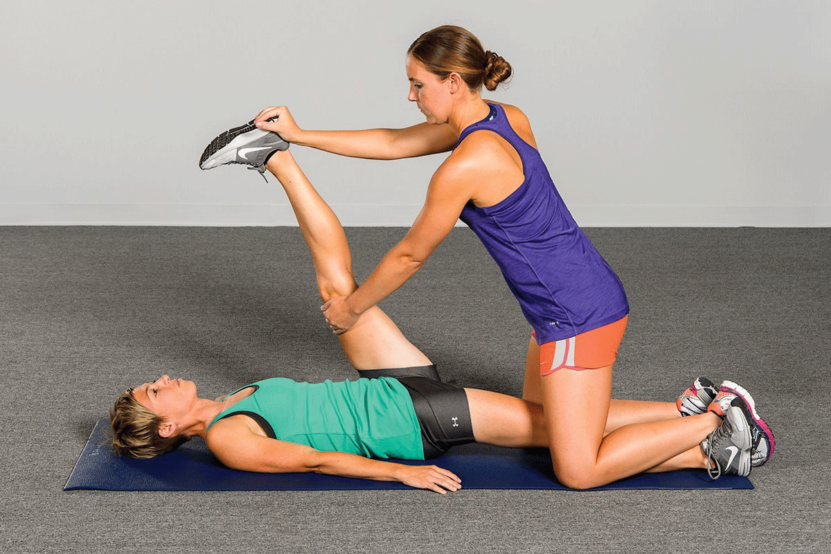Proprioceptive Neuromuscular Facilitation (PNF) patterns have become a powerful tool in the field of stretching and flexibility training. By using a combination of passive stretching and muscle contractions, these techniques help to enhance both muscle flexibility and range of motion.
PNF patterns are widely recognized for their effectiveness, especially in sports and rehabilitation settings. They engage the body’s proprioceptors to optimize the stretch, allowing muscles to relax and lengthen more than traditional stretching methods.
Understand What PNF Patterns Are
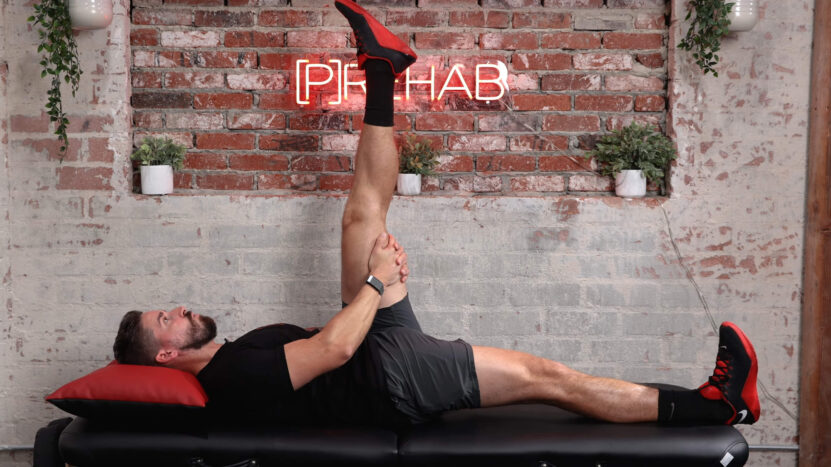
Proprioceptive Neuromuscular Facilitation (PNF) is a specialized method for improving flexibility and range of motion (ROM) by using a combination of muscle contractions and passive stretching.
Initially developed in the 1940s for rehabilitation, PNF has since become widely used in sports and physical therapy. This method relies on activating the body’s proprioceptors—sensory receptors that respond to movement and position changes—to maximize the effectiveness of each stretch.
Key Facts About PNF Patterns
- History: PNF was created to help patients with neurological disorders recover muscle function. It has evolved to help athletes improve flexibility and prevent injury
- Effectiveness: Studies show that PNF stretching increases ROM more effectively than static stretching. Research suggests that the combination of stretching and contracting helps muscles relax better during the stretching phase
- Common Techniques: PNF often uses the Contract-Relax (CR) and Contract-Relax-Antagonist-Contract (CRAC) methods to deepen flexibility by activating both the stretched muscle and its opposing muscle group
Types of PNF Patterns
PNF patterns are classified based on the muscles or body parts they target. These movements involve diagonal and rotational components for a comprehensive range of motion:
- Upper Body:
- Flexion-Adduction-External Rotation: Focuses on shoulder and arm flexibility.
- Extension-Abduction-Internal Rotation: Engages muscles along the shoulder girdle
- Lower Body:
- Flexion-Adduction: Helps with hip mobility.
- Extension-Abduction: Improves lower limb flexibility
Why Use PNF Patterns?
- Maximizes Muscle Stretch: PNF stretches use contractions to trigger the Golgi tendon organs (GTO), leading to muscle relaxation and a deeper stretch
- Targets Specific Muscles: PNF can be tailored to specific muscle groups, making it a versatile option for both athletes and those in rehabilitation
How PNF Enhances Flexibility?
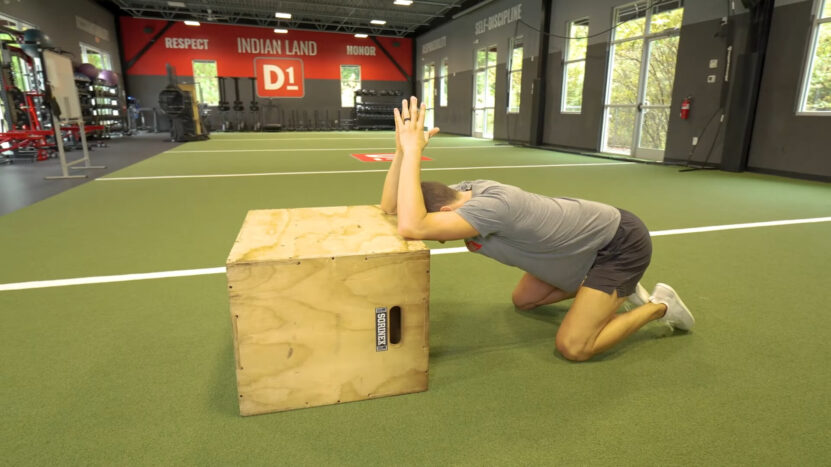
PNF patterns are known for their ability to significantly enhance flexibility through a combination of stretching and muscle contractions. These techniques activate specific receptors in the muscles, allowing for a greater range of motion (ROM) compared to traditional methods like static stretching.
By working with the body’s natural reflexes, PNF helps improve muscle flexibility, coordination, and strength.
- Autogenic Inhibition: This occurs when the muscle that is being stretched contracts isometrically, activating the Golgi tendon organs (GTOs). The GTOs then signal the muscle to relax, allowing it to stretch further. This process results in greater flexibility.
- Reciprocal Inhibition: When the antagonist muscle contracts (the muscle opposite to the one being stretched), it encourages the stretched muscle to relax. This is often used in the CRAC method to further enhance flexibility.
Benefits of PNF for Flexibility
- Increased Range of Motion (ROM): PNF stretching can significantly increase both passive and active range of motion in joints, making it more effective than static stretching alone.
- Improved Muscle Function: By engaging the proprioceptors during the contraction phase, PNF enhances the brain-muscle connection, leading to better muscle control and flexibility over time.
- Enhanced Athletic Performance: Increased flexibility allows for more efficient movement patterns and a reduced risk of injury during high-performance activities, such as sprinting or jumping.
Key Insights
- PNF Stretching vs. Static Stretching: While both methods can improve flexibility, PNF stretching provides a faster and more significant increase in ROM due to the active engagement of muscles during contraction.
- Ideal for Rehabilitation: PNF is frequently used in rehabilitation settings to help patients regain muscle flexibility and strength, particularly after injuries.
Follow Key PNF Stretching Techniques
PNF stretching techniques are effective for increasing flexibility and range of motion, and there are several key methods that can be applied depending on the desired outcome. Each method involves specific muscle contractions and stretching sequences designed to take full advantage of the body’s natural reflexes.
These techniques are widely used in both rehabilitation settings and athletic training to improve muscle function, flexibility, and recovery.
Key PNF Techniques
1. Contract-Relax (CR) Method
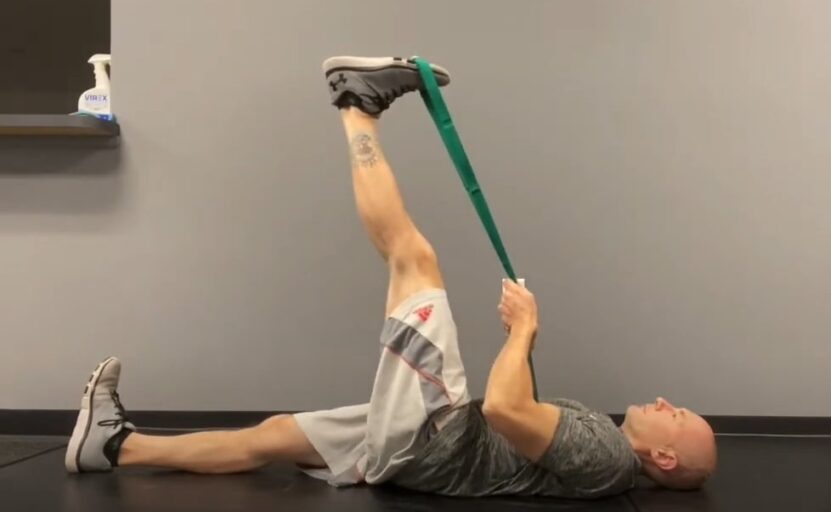
This technique involves passively stretching a muscle to its limit, followed by an isometric contraction against resistance for about 5-6 seconds. After the contraction, the muscle is relaxed and stretched further.
This method is especially useful for improving flexibility in tight muscles and is commonly applied in areas like the hamstrings or quadriceps.
2. Contract-Relax-Antagonist-Contract (CRAC) Method
Similar to the CR method, the CRAC method adds a contraction of the antagonist muscle group after the initial contraction and relaxation. This encourages the muscle being stretched to relax even further.
The CRAC technique is considered more advanced and is often used to maximize flexibility gains, particularly in more flexible individuals.
3. Hold-Relax Method
In this method, the muscle is stretched to the point of tension and held there. After a brief hold, the muscle is contracted isometrically against resistance, then relaxed, and stretched further.
How to Apply These Techniques?
- Preparation: Before performing any PNF technique, it is essential to properly warm up the muscles. This helps prevent injury and prepares the muscle fibers for the stretch.
- Intensity: PNF stretching should be done at a moderate intensity. Overstretching or applying too much force during the contraction phase can increase the risk of injury, particularly in smaller muscle groups.
Additional Insights
- Repeated Cycles: PNF stretches are typically repeated for 2-4 cycles, allowing for gradual and controlled increases in flexibility with each round.
- Rest Periods: It’s important to rest the muscles between cycles, usually for about 20-30 seconds, to avoid fatigue and maximize the effectiveness of each stretch.
Use the Contract-Relax Method for Flexibility
The Contract-Relax (CR) method is one of the most popular techniques in Proprioceptive Neuromuscular Facilitation (PNF) stretching, particularly for improving muscle flexibility.
This technique is effective for targeting tight or stiff muscles by combining a period of contraction with passive stretching. It is widely used in athletic training and physical therapy to help people increase their range of motion (ROM).
How the Contract-Relax Method Works?
- Passive Stretching: First, the muscle is stretched passively until a point of tension is reached. This phase involves no active muscle contraction and helps elongate the muscle fibers to their limit.
- Isometric Contraction: Once the muscle is stretched, the individual contracts the target muscle isometrically (without movement) against resistance. This contraction typically lasts for 5-6 seconds.
- Relaxation and Deeper Stretching: After the contraction, the muscle is allowed to relax. Following relaxation, the partner or individual will apply a deeper passive stretch, pushing the muscle beyond its initial limit.
Benefits of the Contract-Relax Method
- Greater Flexibility Gains: Research shows that the CR method can lead to significant improvements in flexibility, particularly when used on tight muscles like the hamstrings or calves.
- Efficient Muscle Relaxation: By engaging in isometric contraction followed by relaxation, the body takes advantage of the Golgi tendon organ (GTO) reflex, which helps relax the muscle and allows for deeper stretching.
- Enhanced ROM: The CR method is especially beneficial for increasing passive range of motion, which is critical for overall muscle flexibility and joint health.
Tips for Performing the CR Method
- Focus on Large Muscle Groups: This method is particularly effective for larger muscle groups, such as the hamstrings, quadriceps, and calves.
- Keep Intensity Moderate: The contraction should be strong but not maximal—aim for about 50-60% effort. Overexertion could lead to muscle strain or injury.
- Use Controlled Movements: Slow and controlled movements are key to getting the most out of this technique while minimizing injury risk.
Additional Insights
- Repeat Cycles: Performing 2-4 cycles of the CR method can enhance the overall effectiveness of the stretch. Each cycle should gradually increase the muscle’s flexibility.
- Rest Between Cycles: Allow the muscle to rest for 20-30 seconds between cycles to avoid fatigue and maximize the benefits of the stretch.
Activate Muscles with the CRAC Technique
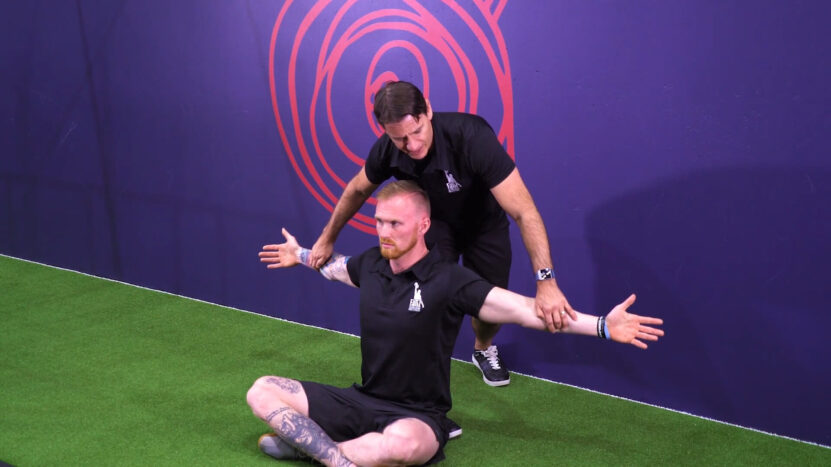
The Contract-Relax-Antagonist-Contract (CRAC) technique is an advanced method in PNF stretching, designed to improve flexibility by engaging both the target muscle and its antagonist (opposing muscle).
This technique builds on the foundation of the Contract-Relax (CR) method but introduces a further contraction, leading to even deeper muscle relaxation and enhanced range of motion (ROM).
How the CRAC Technique Works
- Passive Stretching: Similar to the CR method, the muscle is first passively stretched to its initial limit.
- Isometric Contraction of the Target Muscle: The individual contracts the stretched muscle against resistance for about 5-6 seconds.
- Relaxation: After the contraction, the muscle is relaxed, and a deeper passive stretch is applied to the target muscle.
- Antagonist Contraction: Following the relaxation phase, the opposing muscle (antagonist) is contracted. This contraction helps to further relax the target muscle, allowing for a more significant stretch.
Benefits of the CRAC Technique
- Maximized Stretching: By incorporating the contraction of the antagonist muscle, the CRAC technique allows the stretched muscle to relax even more, leading to greater flexibility gains.
- Improved Muscle Coordination: Engaging both the target muscle and its antagonist promotes better coordination and control, making this technique particularly useful for athletes.
- Enhanced ROM: The CRAC method is highly effective for increasing both passive and active range of motion, improving overall flexibility.
Tips for Applying the CRAC Technique
- Use Controlled Movements: Slow, controlled movements are critical to safely performing the CRAC technique, particularly during the contraction of the antagonist muscle.
- Focus on Major Muscle Groups: This technique works well on large muscle groups such as the hamstrings, hip flexors, and quadriceps.
- Moderate Effort: Like the CR method, the contractions should be performed at moderate intensity (about 50-60% effort) to prevent muscle strain.
Additional Insights
- Repeat Cycles for Best Results: Performing 2-4 cycles of the CRAC technique can yield substantial improvements in flexibility.
- Rest Periods: Allow for 20-30 seconds of rest between cycles to avoid muscle fatigue and enhance the overall effectiveness of each stretch.
Apply PNF Patterns Safely
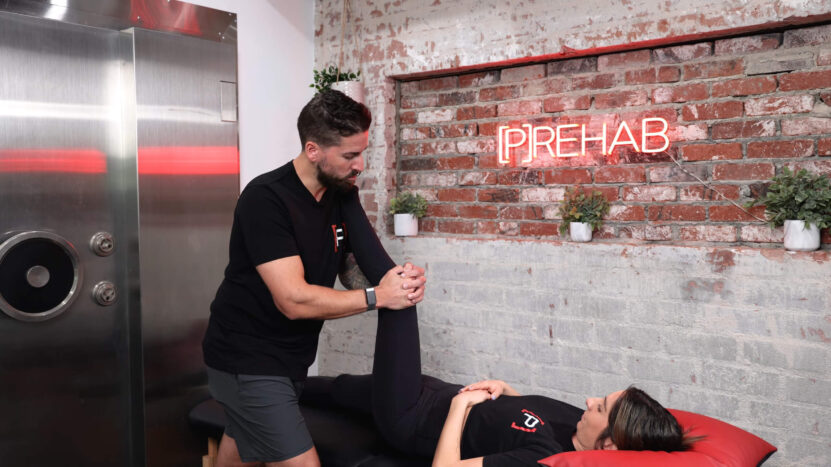
While PNF stretching is highly effective for improving flexibility, it’s crucial to use proper techniques and precautions to avoid injury. The stretching process involves muscle contractions and deep stretching, which can lead to muscle strain or damage if done incorrectly.
Understanding how to apply PNF patterns safely ensures the benefits of increased range of motion (ROM) without the risk of injury.
Safety Tips for PNF Stretching
- Warm-Up Properly: Always start with a thorough warm-up before performing PNF stretches. A warm-up increases blood flow to the muscles, making them more pliable and less prone to injury.
- Avoid Overstretching: While the goal is to increase flexibility, overstretching can lead to muscle or tendon damage. Stretch only to the point of mild discomfort, not pain.
- Use Moderate Intensity: When performing the contraction phase of PNF, avoid using maximum force. Aim for about 50-60% effort during the isometric contraction to prevent strain on the muscles, especially smaller muscle groups.
Key Precautions
- Gradual Progression: Start with lighter stretches and increase the intensity gradually over time. This helps the muscles adapt without risking injury.
- Partner Involvement: In many cases, PNF stretching requires a partner to provide resistance. Ensure that the partner applies steady, controlled resistance and communicates with the individual throughout the process.
Tips for Specific Groups
- For Beginners: Start with basic PNF stretches such as the Contract-Relax method before progressing to more advanced techniques like CRAC.
- For Individuals with Injuries: Consult a physical therapist before attempting PNF stretching if you have any existing injuries. PNF can help in rehabilitation, but incorrect application can exacerbate existing conditions.
Additional Insights
- Frequency: PNF stretching should be done 2-3 times a week to allow the muscles time to recover between sessions. Overstretching too frequently can lead to overuse injuries.
- Controlled Movements: Always perform PNF stretches with slow, controlled movements. Quick or jerky motions can cause muscle strain or other injuries.
Improve Performance and Prevent Injuries with PNF
Proprioceptive Neuromuscular Facilitation (PNF) stretching is not only effective for increasing flexibility but also for enhancing overall athletic performance and reducing the risk of injuries.
By using muscle contractions and deep stretches, PNF helps muscles become more flexible, which leads to better movement patterns and injury prevention. Athletes and fitness enthusiasts can benefit from integrating PNF into their routines to improve both performance and recovery.
Performance Benefits of PNF
- Increased Muscle Efficiency: PNF stretching enhances the communication between the brain and muscles, leading to more coordinated and efficient muscle contractions. This improved coordination can result in better athletic performance, especially in activities requiring complex movements.
- Enhanced Flexibility for Better Movement: Flexibility is essential for many sports and physical activities. PNF stretching allows athletes to achieve a greater range of motion, which is critical for improving agility, speed, and overall movement performance.
Injury Prevention
- Reduced Muscle Tension: PNF stretching helps to release muscle tension, which can reduce the likelihood of strains or tears during physical activity. This is particularly important for athletes engaging in high-intensity or repetitive movements.
- Improved Joint Mobility: Increasing the range of motion in joints can reduce the risk of joint injuries. PNF techniques focus on both muscles and joints, making them more adaptable to sudden movements or impacts.
Practical Tips for Injury Prevention
- Incorporate PNF into Regular Training: To prevent injuries, it’s important to regularly include PNF stretching in your training program. Focus on key muscle groups like the hamstrings, hip flexors, and shoulders, which are prone to injury.
- Perform PNF Before and After Workouts: Using PNF stretching as part of a warm-up can help loosen muscles and prepare them for activity. Post-workout PNF stretching can aid recovery by reducing muscle stiffness and promoting flexibility.
Additional Insights
- Better Recovery Time: PNF can also help in faster recovery after intense exercise by improving circulation and reducing muscle soreness.
- Long-Term Flexibility Gains: Regular use of PNF stretching techniques leads to sustained improvements in flexibility, which not only prevents injuries but also enhances long-term athletic performance.
FAQs
How often should I do PNF stretching?
It’s recommended to perform PNF stretching 2-3 times per week. Doing it more frequently can lead to muscle strain, so give your muscles time to recover between sessions.
Can I do PNF stretches by myself?
Yes, but it’s more effective with a partner. Some PNF techniques can be done solo, but having a partner helps apply resistance during contractions.
Is PNF better than regular static stretching?
PNF is generally considered more effective for increasing flexibility and range of motion compared to static stretching, but it can be more intense and requires proper technique.
Who should avoid PNF stretching?
People with recent muscle or joint injuries should avoid PNF stretching without consulting a physical therapist or medical professional, as improper use could worsen injuries.
Can PNF help with muscle soreness?
Yes, PNF can reduce muscle soreness and improve recovery by increasing blood flow and relaxing tight muscles after exercise.
How long should each PNF stretch last?
Each PNF stretch typically involves 5-6 seconds of contraction followed by 20-30 seco
nds of stretching. This cycle is usually repeated 2-4 times for the best results.
Conclusion
PNF patterns are a powerful tool for improving flexibility and range of motion through a combination of muscle contractions and deep stretching.
Techniques like the Contract-Relax (CR) and Contract-Relax-Antagonist-Contract (CRAC) methods are widely used to help muscles stretch further, making them highly effective for athletes, physical therapy patients, and anyone looking to enhance flexibility.

